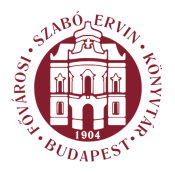Matits Ferenc: Protestant Churches - Our Budapest (Budapest, 2003)
was greatly facilitated by the above-mentioned foundation made in the middle of the 19th century by Karolina Artner Glosius. The construction committee called for tenders in a limited competition to which 35 architects were invited. The first prize was awarded to Lajos Schodits, the second went to Arthur Meinig and the third was won by Károly Schubert Herman and Kálmán Hübschl. The committee also purchased designs made by Elek Barcza and Ernő Gerey. Eventually, it was Samu Pecz, professor of the University of Technology, who was commissioned to prepare the definitive designs. Pecz (1854-1922) had pursued his studies in Budapest, Stuttgart and Vienna, and then worked in association with Frigyes Schulek and Alajos Hauszmann. Best known of his buildings standing in Budapest are the central Market Hall, the National Archives, several parts of the complex in the campus of the University of Technology (such as the neo-Gothic library), the Calvinist church in Szilágyi Dezső tér and the Unitarian house of worship in Nagy Ignác utca. Started in 1903, construction was financed from a fund made up of 300,000 korona granted by the treasury and another hundred thousand raised by individual contributors. However, progress of work carried out on the project was slowed down by repeated strikes and stoppages. The weight of the ceiling above the church, which features elements of the French Gothic period, rests upon groined vaults starting from wall-buttresses. Joined to the secondary school on one side, the church faces the street with its main front and left-hand side front, and the sacristy overlooks the school yard. The structure of the nave was patterned on the Saint Chapelle of Paris, as the architect himself emphasises in his notes. The first floor and gallery of the church have a seating capacity of 440 and the same number of church-goers can attend service while standing. The nine- metre wide nave and the four-metre wide, low-ceilinged aisle are both seven and a half metres long. At the east end of the nave is the apse with its angular closure and vaulted ceiling. Here stands, built to plans by Samu Petz, the richly carved neo-Gothic stone altar featuring Gyula Benczúr's altarpiece The Adoration of the Magi. Between the high altar and the pulpit, close by the wall, are the clerical pews. The marble baptismal font, which has a copper cover, is on the right of the sanctuary, across from the pulpit. The baldachin-topped, hexagonal stone pulpit, embellished with carved symbols of the four evangelists, can be clearly seen from all points of the church. This is so because the side-gallery, which is supported by two huge columns as well as the wall, was installed oppo18
